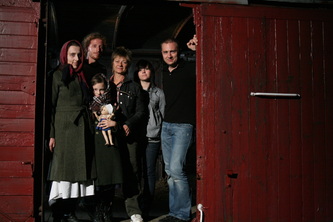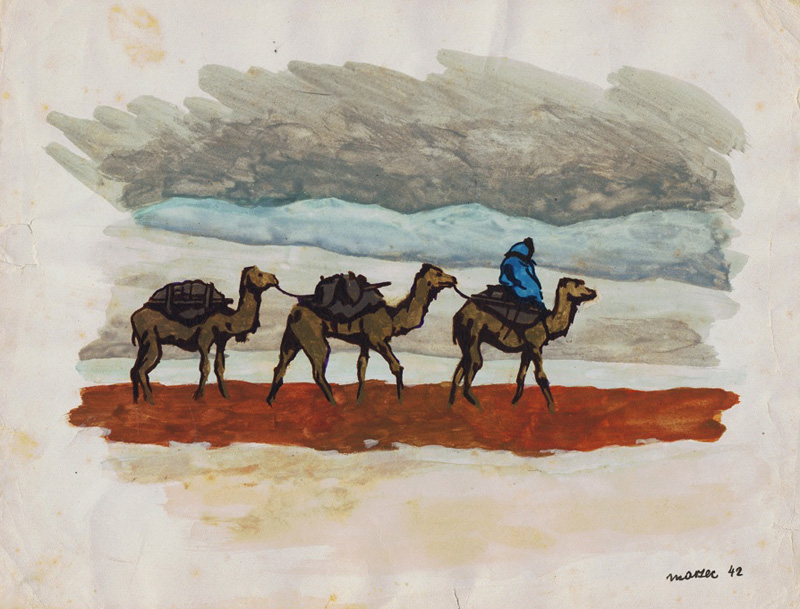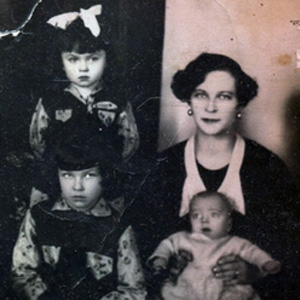 Childhood Denied
Childhood Denied
A film by Myra Dziama
Visual Edge Productions & Ania’s Journey Inc.
Toronto
By 1949, most of the wartime African refugee settlements had been evacuated with families connected to the Polish forces under British command largely going to the UK either to stay there or consider their next destination. The largest settlement, Tengeru, in Tanganyika, (now Tanzania) was the last to close, in part because it served as a temporary stop for people from the smaller settlements, and in part because host countries were hard to find. This was especially true for some orphaned children.
At the same time, Britain had issues of its own to deal with not least the gradual break-up of empire as newly independent countries took over control. At another level, the British also voiced objections to having the British taxpayer supporting a group of Poles in Africa. But more on that later.
At that point, the British saw repatriation as the ideal solution, one that is usually the dream of displaced persons. But it all depends what you are being repatriated to. In this case, the young people who had lost their homes, experienced extreme suffering, and saw their parents die in the Gulag of the Soviet Union were understandably averse to returning to a country now controlled by the Soviet Union.
But few countries want to take in dependent children. Canada’s immigration policy can be quite well understood by the department that handled it: The Department of Mines and Forests. Miners and lumberjacks were needed; children were not.
At this point, The Conference of Catholic Bishops in Canada lobbied the government on behalf of the Polish orphans and Archbishop Charbonneau of Montreal personally guaranteed their care. The 123 young people set off from Africa, via Italy, under the guardianship of a young priest, Jan Krolikowski, who was then accused by the new communist regime in Poland of “kidnapping” them.
This is the story told so beautifully in Myra Dziama’s documentary primarily through the voices of the participants in this drama, along with a great many photographs of their childhood in Africa and an excellent commentary by Lynne Taylor, professor of History at the University of Waterloo and author of The Polish Children of Tengeru: The Dramatic Story of their Long Journey to Canada, 1941-49.
The interviews are excellent and woven seamlessly to reveal both the journey in the ordinary sense of the word but, more importantly, the journey of recovery, in the love, freedom and dignity they found in their Polish orphanage in Africa. There the children formed strong bonds, more like siblings than wards in an institution. Great care was taken not so separate them, to educate them, give them freedom to play, and reassure them that nothing that happened was their fault and their lives were important.
None of this removed the pain of losing their mother. Some remembered that moment and longed for their mother, while others could not remember her but always felt bereft. One, speaking of her own early experience as a mother, felt that because she had not experienced mothering herself, she did not instinctively know how to behave as a mother.
And yet, when they speak of Africa, their faces light up. Those were happy times. Their voices are strong, they smile as they talk of this and their photographs of kids climbing trees, playing with animals, hiking along trails—even on Kilimanjaro—illustrate their stories. The violence, terror, hunger, cold, privation and loss of parents and siblings are experiences that will always stay with them but, thanks to their time in Africa, will never destroy them. A breathtaking story of love and resilience.
In Canada their lives changed. Some of the older ones had to work, as domestics or in factories or on farms. A few were adopted. Some were placed in convent boarding schools. The photographs are very different. The kids in Africa running around in comfortable play clothes are now in black, long-sleeved dresses with stiff white collars. But suddenly their guardian, Fr. Krolikowski, appears and arranges a summer holiday for them on a lake. The photographs once again show a joyful scene: boys and girls playing and swimming.
As the Irish writer, Gregory Maguire, once said, “If the mother is still alive, if the mother was there—what’s the problem? There is nothing to write about.”
It all depends, I suppose on the people and the place and the time. But once upon a time in Africa there was an orphanage that really knew how to do things right. Where else have you ever heard of a joyful orphans’ reunion?
Many thanks to Myra Dziama for collecting those marvelous interviews and creating this fine film.
CR
•••
Editorial note: Readers may be interested in some extra information gathered in archives in Canada and the UK:
British colonial authorities and Polish settlement officials had regular meeting to discuss issues as they came up. One that may explain the success of the orphanage, and indeed of all the children in Tengeru, in recovering from trauma, was the attitude towards discipline. At a meeting in November 1944, the British complained about delinquency, suggesting sterner methods. The Poles replied that corporal punishment for children was forbidden, preferring a punishment of admonishment or additional school tasks. The British cited the case of an 8-year old “delinquent” and insisted that he be brought before the British magistrate to be sentenced to a correctional institution by the court. The Poles stood by their own rules.
At the same meeting but on the subject of finances, the Chairman, (a Mr. Bruton) urged the Poles to insist that the refugees be cautioned against “extravagance.” He added, “As the major portion of the money so expended comes from the Polish budget this may seem interference on my part…” Indeed. His report referred to “extravagance” three more times in just two short paragraphs.
Still on expenses, a document in the National Archives of Canada reveals that the men of the Polish II Corps voted to collectively donate from their paychecks to the support of the orphaned children because they had no fathers.
And finally, it bears noting that the Canada of the 1950 was not quite like the Canada of today. No Prime Minister was greeting and hugging refugee children at the port of Halifax. Indeed, some Canadian parliamentarians and officials expressed their objections in a very objectionable way, questioning whether they were indeed orphans or—and they must have scowled as they expressed this – were they illegitimate? If so, their presence could have dire moral consequences for our country.
Why this Polish story has been so neglected is truly baffling but CR is happy to report that Amanda Chalupa, whose articles have appeared in CR before and do again in this issue, is changing that.

Polish refugees in Africa
In Tułacze dzieci, Hanka Ordonówna’s account of the orphans’ journey out of the USSR, she wrote that at their first stop in Iran, at a Persian orphanage in Meshed, a British official noted that the Persian orphanage was self-supporting because the children worked, weaving Persian carpets. He suggested to the Polish official that the Polish orphans should be taught to do the same. The response was that carpet weaving was not good for the physical, psychological or educational development of children; the Polish children would go to school. And so it was.




Pingback: Welcome to Spring 2016!
Very touching story. I hope this film comes to Poland soon! And many thanks to Irene Tomaszewski for the interesting comentary.
Thank you Irene for your wonderful article and related posts. It certainly is a little-known part of Polish history.
I would love to see this film in Poland as Malgorzata wrote in her comment. Does anyone by chance have any media/TV contacts in Poland? This always helps when trying to promote a film.
Much heart felt respect to the generation of polish people that suffered at hands of nazis and their soviet allies -finally the truth is being told .